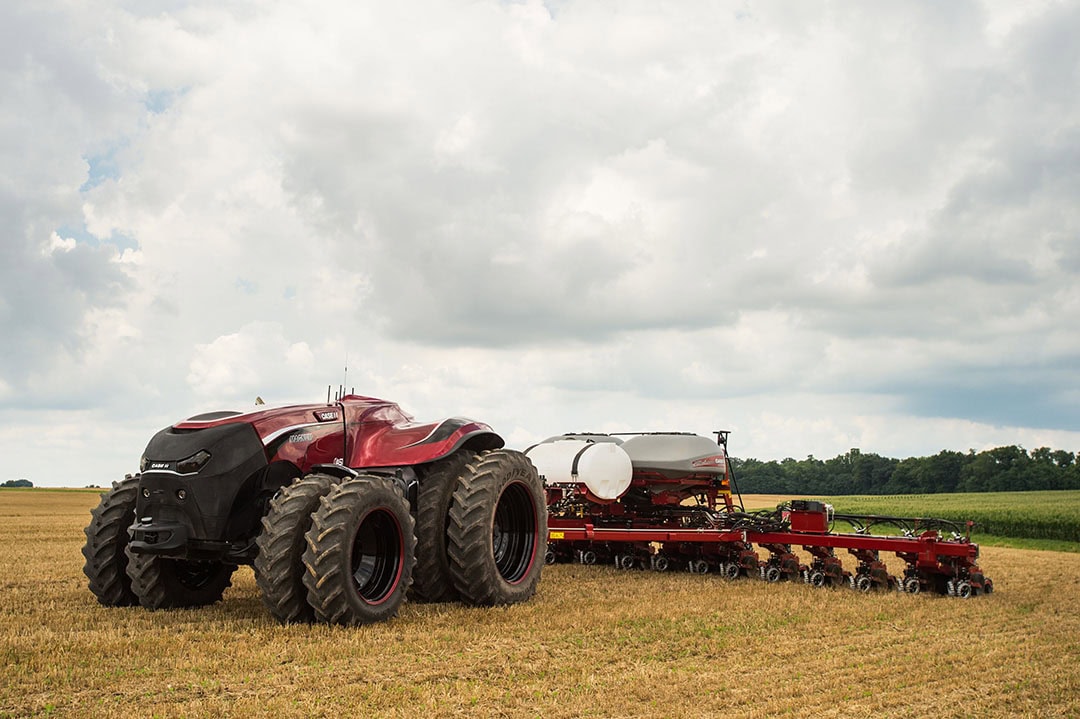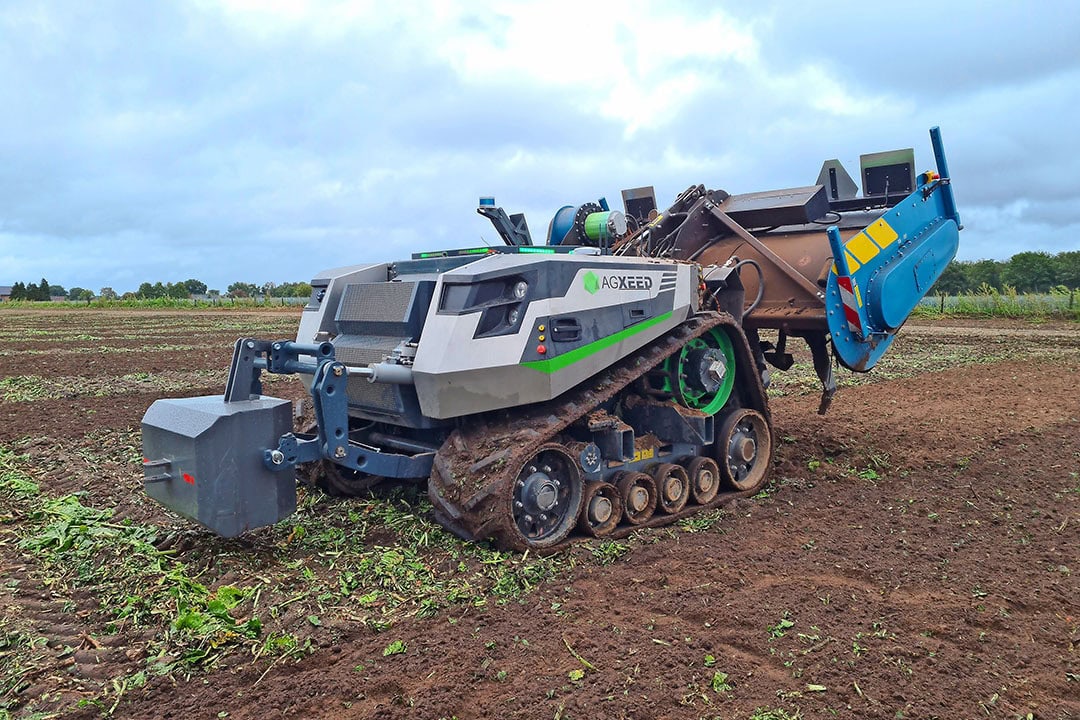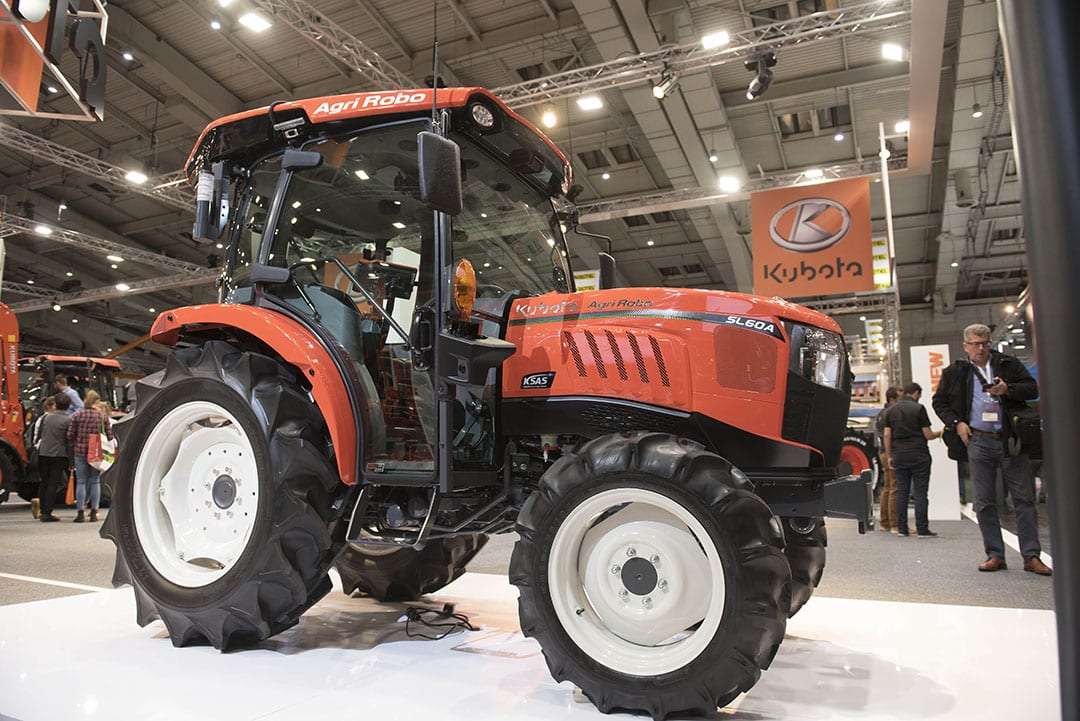Autonomous tractors: Are other manufacturers following John Deere?

John Deere recently announced its first autonomous tractor, which is as good as market-ready. Will other manufacturers follow? Future Farming did a survey among several tractor manufacturers.
Tractor manufacturer John Deere presented its first autonomous tractor last January. Can we expect autonomous tractors from other tractor manufacturers in the near future? We asked the market leaders Claas, Kubota, Case IH, and New Holland. All of them are working on autonomous systems, but cannot or will not say when a market introduction is planned.
Tractor manufacturer Fendt says its R&D department is working on autonomous machinery, but this technology is not yet ready for market introduction. The manufacturer therefore does not want to say anything further about it.
CNH Industrial: many autonomous systems already for sale
CNH Industrial, the parent company behind the brands Case IH, New Holland and Steyr, has launched many autonomous concepts in the past, such as the autonomous Case IH Magnum without a cabin, and an autonomous New Holland T8. These kinds of concepts, according to the manufacturer, are meant to inspire people to think about what is possible with precision farming and automation.
Text continues underneath image

CNH Industrial says it is in the process of testing and developing various autonomous and highly automated functions for tractors, harvesters and, for example, sprayer technology. The company emphasises many of these solutions are already for sale, referring to functions such as automatic headland turning (Intelliturn), automatic grain threshing and screening (AFS Harvest Command and IntelliSense), and precise seed placement (AFS Soil Command). According to the manufacturer, these types of techniques help to move a step closer to full autonomy.
According to CNH Industrial its recent acquisition of Raven Industries will accelerate the market introduction of autonomous solutions, but there is currently no specific timeline for an introduction.
Claas: autonomy high on the agenda
German manufacturer Claas states autonomy is high on its agenda, and sees current automation as the basis for full autonomy, or synchronization systems where one machine follows the other. Claas refers here to Cemos automation, which is available on combines, forage harvesters and tractors, and to such features as Isobus, GPS control and headland management, thus anticipating autonomy. To take further steps, the manufacturer is hoping for improved legislative frameworks, and in the meantime R&D is continuously working on this topic.
Different opportunities for autonomous systems
Claas sees different opportunities for autonomous systems, citing two extremes as examples: narrow-track tractors, and medium to large tractors for arable crops. According to Claas, the the narrow-track segment offers the best opportunities for autonomy in the short- and medium-term. After all, the size of an autonomous machine makes little difference in technical terms, but it does in terms of safety, risk management and responsibilities.
The manufacturer notes there is a growing demand for tractors in the mid- and high-end segments from regions where there is a lack of well-trained and motivated drivers, but the larger and more expensive the machine is, the higher the risk and the more complex the risk management is.
On the other hand, the first steps towards full autonomy are already being taken: Claas is cooperating with AgXeed and has a minority stake in this maufacturer of field robots. The first robots from this startup have been sold to customers and will be delivered this year.
Text continues underneath image

Kubota: focus on Japan
Like Germany’s Fendt, Japan’s Kubota does not yet want to say much about developments in this field. The Japanese manufacturer invests heavily in start-up companies, has been working with Nvidia on autonomous tractors since 2020, and introduced some autonomous machines in its Japanese home market back in 2017. However, the autonomous Agri Robo tractor remains reserved for the Japanese market; Kubota says it has not yet decided whether the 60-hp autonomous tractor will be introduced in other markets.

Join 17,000+ subscribers
Subscribe to our newsletter to stay updated about all the need-to-know content in the agricultural sector, two times a week.



